Grand Seiko’s SBGA229 divers’ watch combines traditional mechanical watchmaking and the precision of electronic timekeeping. This is made possible by Spring Drive technology, developed by Seiko, and the result is an authentic divers’ watch with a unique inner life. In this feature from the WatchTime archives, with original photos by Olaf Köster, we give it a thorough once-over.
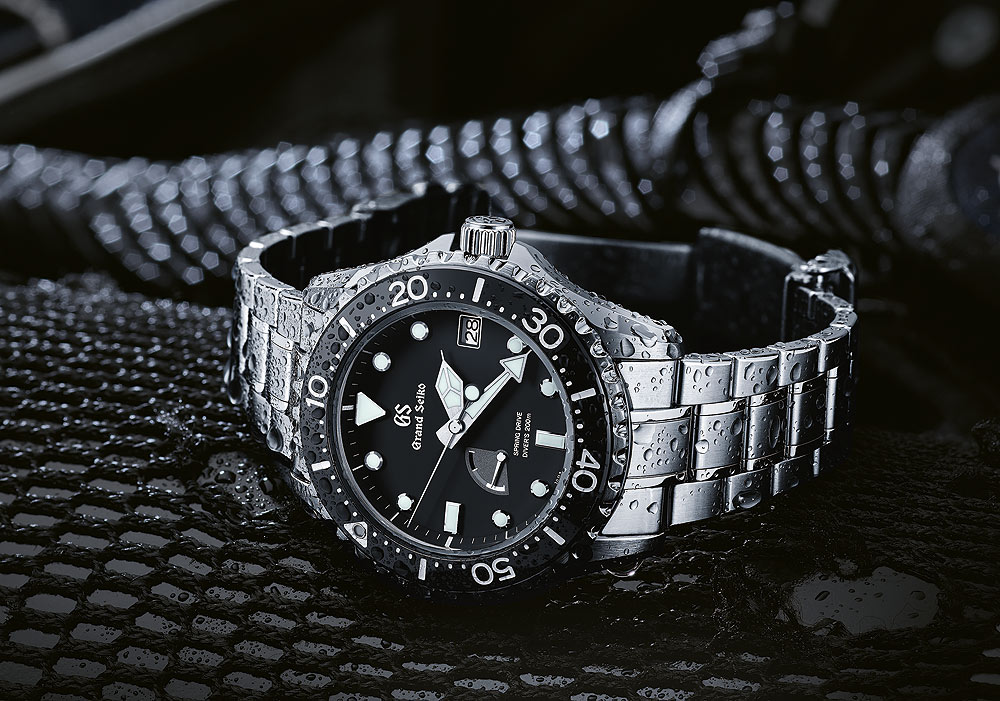
Grand Seiko stands at the forefront of Japanese watchmaking, and one-of-a-kind Spring Drive technology is regarded as the best that Seiko has ever produced. So it stands to reason that this innovation has joined the Grand Seiko collection, which traces its ancestry to the 1960s and to the idea that form follows function. The combination of mechanics and electronics seems perfect, but nevertheless, it took several years for Spring Drive technology to be integrated into Seiko’s exclusive line.
Seiko premiered Spring Drive technology in 1999, but the lack of a sufficiently effective automatic winding system and, as a result, the short duration of the power reserve initially dissuaded the brand from incorporating the technique into Grand Seiko. Several years of further development culminated in the Caliber 9R Spring Drive in 2004. Our test watch encases the 9R65 version, which shows the date and the remaining power reserve. Its automatic winding system relies on the Magic Lever: Seiko originally developed this ratchet winding system in 1959 and subsequently enhanced its efficiency, simplified its maintenance and lengthened its durability. The power reserve has been extended from 48 hours in the hand-wound caliber to 72 hours in the self-winding movement. Caliber 9R65 is now the most widely used 9R Spring Drive movement in various Grand Seiko models. Its development was only possible because Seiko has the necessary expertise in both mechanics and electronics.
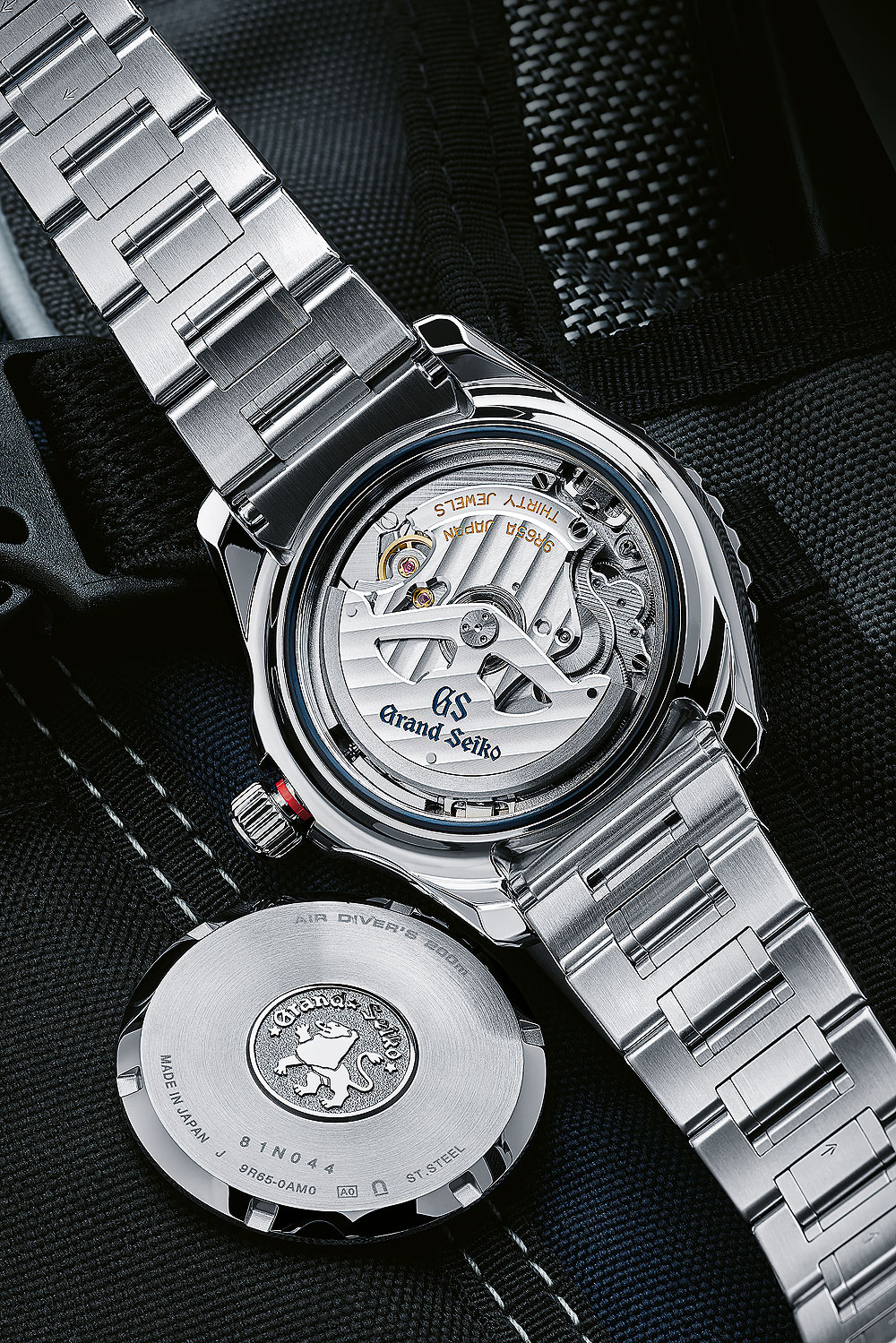
Spring Drive Enables High Accuracy
Spring Drive combines the traditional spring power of a mechanical movement and state-of-the-art electronics that require neither a battery nor any other external energy source. The movement generates its energy in the traditional way, thus making the watch wholly independent of external power sources. The mainspring provides the power at one end of the gear train. A conventional escapement is replaced at the other end by a regulating system, which generates a small electrical charge that activates a quartz oscillator. Instead of an escape wheel, a glide wheel rotates uniformly over an electromagnetic coil, thus generating electrical current, which is conducted to an integrated circuit (IC) and a quartz crystal. While the quartz vibrates at an unchanging frequency, the IC calculates the required electromagnetic pulse, which regulates the rotational speed of the glide wheel and thus the rate of the movement. Unlike an escape wheel, the glide wheel is not subjected to mechanical intervention, so scarcely any power is lost due to friction. Spring Drive accordingly achieves a far more accurate rate than a mechanical escapement. Seiko calculates the average deviation at 0.5 second per day and at most, 15 seconds per month. We measured a deviation of 0.1 second per day on the wrist. After half a month, our test watch had gained 2 seconds.
Spring Drive uses quartz technology to regulate the running of a mechanical movement, thereby attaining much greater accuracy than a purely mechanical movement could achieve. Credit for this precision goes to the Tri-synchro regulator system, which converts the mainspring’s mechanical energy into electrical current for the integrated circuit and the quartz crystal. While the crystal oscillates evenly, the IC regulates the watch’s rate by giving impulses to the glide wheel.
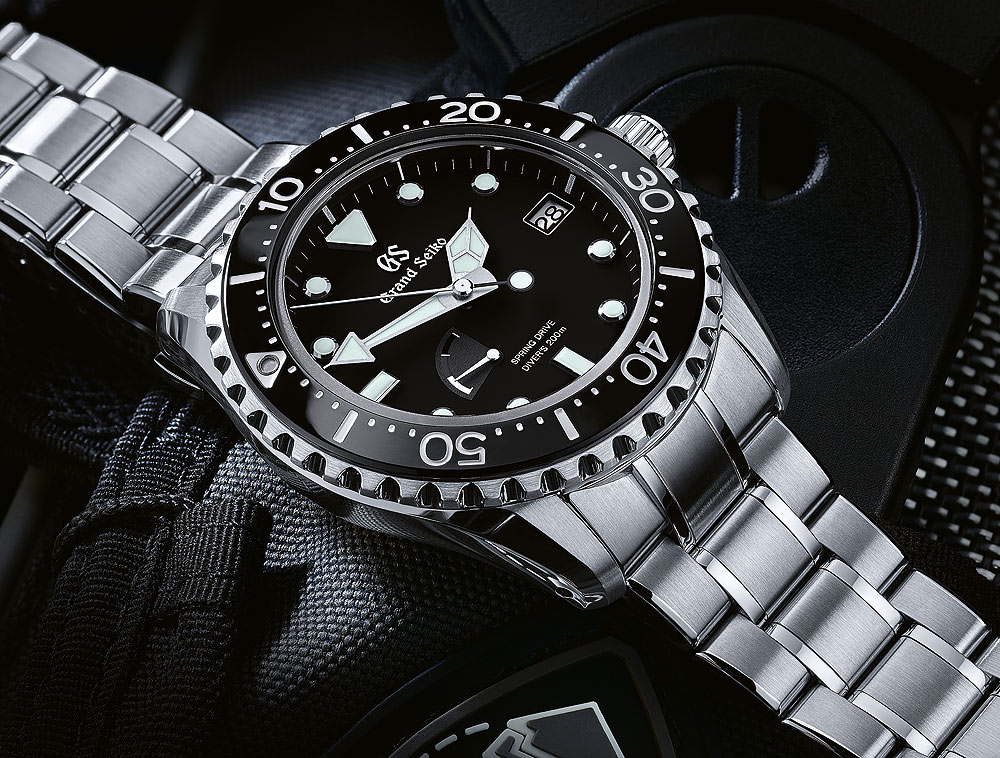
A Silently Gliding Seconds Hand Indicates The Seconds
The glide wheel rotates clockwise 28,800 times per hour. This pace corresponds to the number of semi-oscillations completed each hour by the balances in modern mechanical movements. But unlike an escape wheel, the glide wheel is not repeatedly halted and released, so the seconds hand advances smoothly around the dial rather than progressing in individual steps. Of course, the characteristic ticking sound is not produced, but the silent gliding of the seconds hand makes the Spring Drive’s time display unique.
A luminous dot glides above the dial at the short end of the seconds hand. This dot’s luminosity and steady rotation are particularly important during a dive because they assure the wearer that the watch is still running. The hour and minutes hands are also amply equipped with Lumibrite, a luminous paint developed by Seiko. These hands are clearly distinguishable from each other because each has its own distinctive shape. In tandem with multifaceted luminous appliqués, they offer optimum legibility under all lighting conditions for which Seiko’s diving watches are renowned.
During the day, strong black-and-white contrasts beneath the anti-reflective sapphire crystal leave no doubt as to the time. The power-reserve display at 8 o’clock looks somewhat unusual: as the power in the mainspring decreases, this display’s hand gradually sweeps from the bottom to the top of a 90° arc. The hand points to the white sector at the bottom of the arc when the mainspring is fully wound, but the power-reserve display would have been easier to understand if the critical phases of the declining power reserve were marked by the white segment rather than by the gray and then the black portion of the arc. The date at 3 o’clock is very easy to read: this indicator begins to switch one hour before midnight and jumps ahead to show the next day’s date shortly after midnight. It can be manually adjusted by turning the crown after it has been pulled out to its middle position.
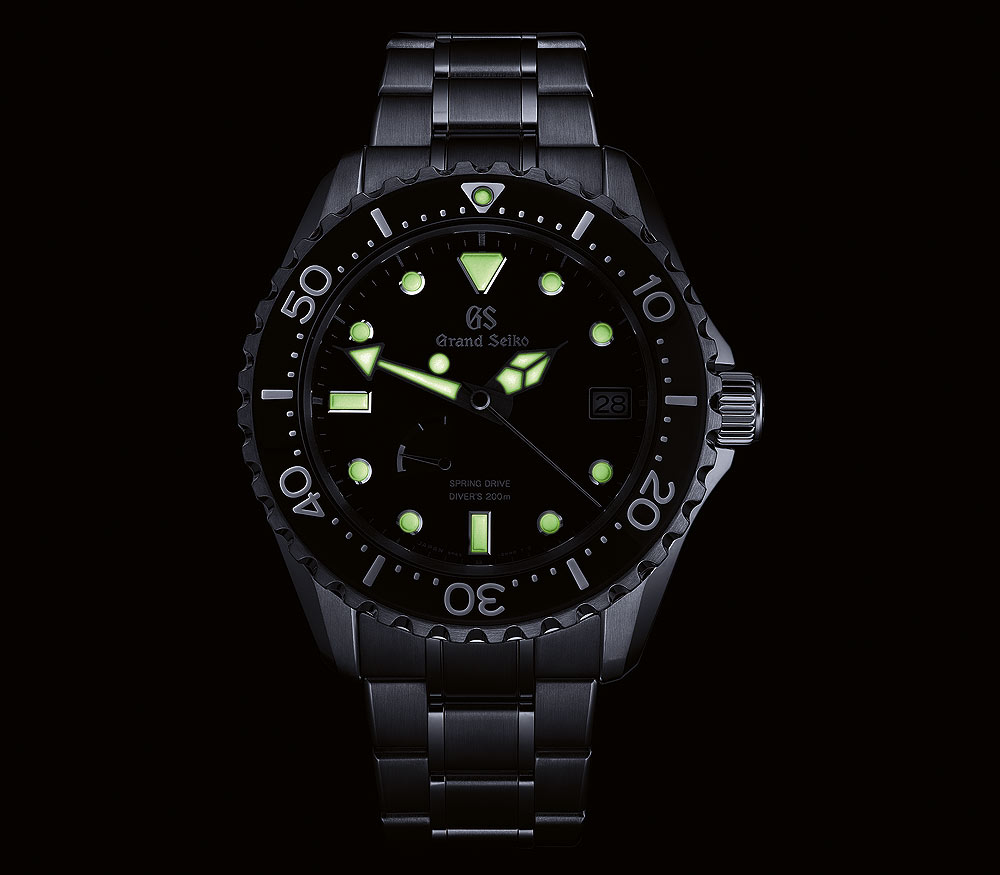
A Professional Divers’ Watch in a Prestigious Price Class
As befits a divers’ watch, the crown is sturdy, knurled, can be screwed down and is protected against shocks by lateral flanks. The crown remains easy to operate in every situation. The unidirectional rotatable divers’ bezel is equally user friendly; it snaps smoothly into place in half-minute increments, is calibrated with markings for almost every minute and is affixed to a case that has been given the special Zaratsu polish in Seiko’s Shinshu Watch Studio. Here, each stainless-steel case is manually polished to a high gloss by gently pressing it against rotating abrasive disks. The bezel is inlaid with titanium carbide, an especially hard and shatterproof composite of titanium and carbon. The divers’ bezel guarantees a secure grip thanks to its ergonomic angle and its notched perimeter. Last but not least, the case is pressure resistant to 20 bar and tightly sealed by a massive screwed back adorned with Grand Seiko’s lion emblem.
The deployant clasp, which has hinges on one side only, is a technical highlight. In addition to lateral push-buttons for opening the closure and a safety bow, this clasp also integrates an extremely functional extension mechanism. Without having to open the clasp, the wearer simply unlocks the safety and can add more than three centimeters to the bracelet’s length. The extension process progresses incrementally through 14 locking points. The bracelet can be shortened again simply by pushing it back into the clasp. Like the entire stainless-steel bracelet, the clasp is extremely supple and feels very comfortable on the wrist.
The manufacturer’s recommended retail price ($6,000) puts the Grand Seiko Spring Drive Diver SBGA229 close to the elite company of Rolex (the Oystersteel Submariner with no date is $7,500) and above the stainless-steel version of Omega’s Seamaster Diver 300M ($5,200). These Swiss brands offer 100 more meters of pressure resistance and, in the Omega, greater resistance to magnetic fields. Despite its technologically unique electromechanical caliber, the Grand Seiko will have to work hard to assert itself in such a competitive environment.
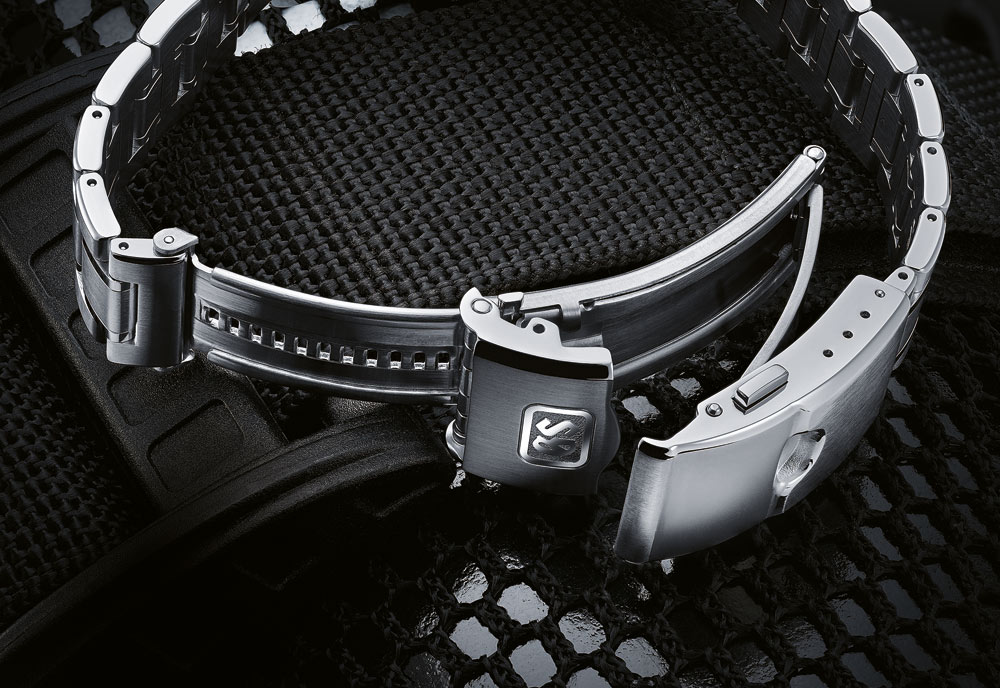
SPECS
Manufacturer: Seiko Epson Corp., Shinshu Watch Studio, Shiojiri, Japan
Reference number: SBGA229
Functions: Hours, minutes, central seconds, date, power-reserve display, uni-directional rotatable divers’ bezel
Movement: Caliber Seiko 9R65A based on Caliber 9R Spring Drive, 28,800 vph (glide wheel), 32,768 Hz (quartz oscillator), 30 jewels, Diashock shock absorption, fine adjustment using Tri-synchro regulator system, 72-hour power reserve, diameter = 30.0 mm, height = 5.10 mm
Case: Hardened stainless steel, bezel inlaid with titanium carbide, sapphire crystal above the dial with anti-reflective coating on its underside, solid caseback, water resistant to 200 meters
Bracelet and clasp: Hardened stainless steel, push-button deployant clasp with safety and extension mechanism
Rate results (Deviation in seconds per 24 hours):
Average rate: Wearing test +0.1
Dimensions: Diameter = 44.23 mm, height = 14.12 mm, weight = 204 g
Variations: Titanium model SBGA031 ($7,100)
Price: $6,000


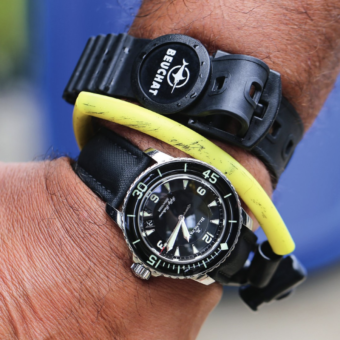

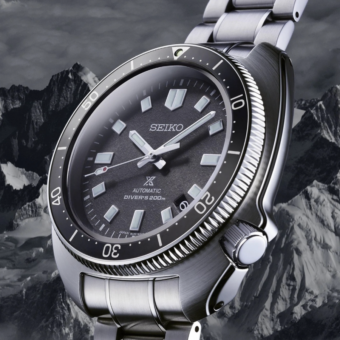
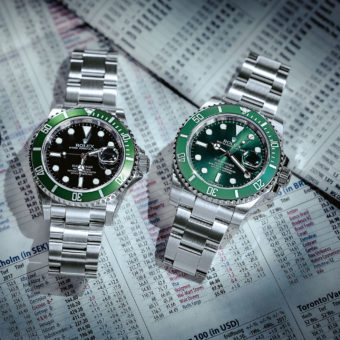
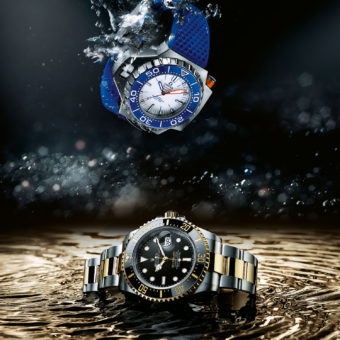
I have collected primarily vintage watches for just over 20 years so in my area of knowledge Seiko watches were reliable and good quality generally inexpensive watches from Japan. For the last 12-15 of my collecting I generally focused on higher end Swiss watches with the occasional higher grade American, German or English watch attracting my attention. The only examples I can remember of Japanese watches were a couple 1960s/1970s automatic Seiko diver models. The few I have owned were always impressive quality, reliable, accurate, and good looking for the type and era. They looked like you would expect a purpose built dive tool to look like. This is all a long way of saying that when I decided I wanted a Spring drive after learning about them in 2005 naturally it would be a Grand Seiko dive model. I chose the SBGA229 in steel as it was classic looking and on the less expensive end of the spectrum, if a $6000 Seiko can be considered less expensive. I admit the price did give me pause, for several years in fact, but after wearing the watch for a few weeks I did not regret the purchase and was very impressed overall. The accuracy is better than any other watch I have ever owned. The completely silent and perfectly smooth motion of the second hand is mesmerizing, and imaging the movement spinning away inside always leaves me impressed if not more than a little confused about how it works exactly despite reading detailed articles about the technical aspects of Spring Drive several times. Whenever I try to explain how it works to others I always get lost after a very basic description of it using a mechanical mainspring to power a quartz oscillator for the best of both types. The only complaints I have about the watch are the lack of a display back so I can admire and show off the unique and ruggedly attractive movement within, the steel bracelet also is a letdown. It looks like the bracelet from a $300 Seiko and doesn’t feel or sound a whole lot better. Finally, the after sales service has been less than impressive for a watch in this price segment. My advice is if you are attracted to Grand Seikos with Spring Drive movements and can swallow the price, go ahead a get one. They truly are impressive in their quality, design and engineering. Just select one with a crystal back as the movement is at least half of what these watches are all about.
The watch itself is brilliant and excellent value for money. The ratchet style clasp is not as practical as it seems. When you extend the bracelet out it is actually very deformed on the wrist and ugly as well as it looks like there is a piece missing. Rolex’s solution is better because the watch even whilst extended still looks complete on wrist…
You didn`t mention all those divers (even in Ti and 600 m rating!) and GS containing the 5R65/66. I paid some 35% less for them though…
On the issue of resale values….
Why do people keep referring to the Swiss having greater resale values ?
If you were truly satisfied with your watch why would you ever move it on ?
The Swiss resale values only really applies to Patek (not all models) and Rolex (again not all models) and their resale values are driven by opportunists who flip watches and drive up the demand due to controlled limited supply….
Owning 7 GS’s I am extremely satisfied with all of them and would not consider parting with them,
From Gerry Dimatos in Melbourne.
Too bad the hands are not more streamlined. It’s an ugly design for the hands of a diver watch.
“the Grand Seiko will have to work hard to assert itself in such a competitive environment.” – That’s the best you can do? I’m skeptical you actually wore the watch or even had the watch in your possession while writing this review. The fit and finish and detail of this watch is exceptional – I have an early Titanium model purchased in 2010 and it so comfortable I wore it daily (before the pandemic)
The clasp on the Rolex looks cheap and flimsy and most Open Water Divers never go much deeper than 30-45 meters. A bit of friendly advice….next time you write a watch review why don’t you try actually wearing the watch ….as this review is more of a technical journal on the spring drive.
All this is good and swell, but what about the resale value. I am a proponent of Japanese watchmaking, buy the Swiss sell easier, unfortunately…
I’ve had the watch for a week and the accuracy is only 0.1 seconds off, And the dial Is a ghost dial, You can’t see the depth of it, Well done grand seiko.
This watch, with a GMT hand, in this form factor, I would jump on it in a second…
Absolutely superb in every way beautiful design.
An attractive watch but a little too pricey for my fixed income, SSD, but I really like everything about it
Dear John, just my two cents but I think you are somewhat wrong. An escape valve or any form of helium escape system is needed any time that you plan to do any kind of saturation diving, regardless of depth. Am I wrong? Merry Christmas to you all.
I was an early adopter with Grand Seiko.
I’ve had my SBGA029 (previous version to the 229) and I absolutely love it…
I’ve had a Seamaster 300 Professional before and it is only now with the upgrades movement and wave dial that it is now a worthy watch. All previous versions were simply sub standard and not worthy of being this category – especially calibres 1120 and 2500.
As for the Rolex Submariner – I have one and it’s hard to knock….
It is the benchmark and is unbreakable and is highly sought after..
However when you line up the GS with the Subbie and look at them objectively – the GS simply outclasses it and is better finished…
The glide of the second hand is mesmerising and those titanium hands are just amazing…
I rate the GS higher in every level except for market awareness – and that is rapidly changing…
From Gerry Dimatos in Melbourne…
Did Seiko ever make a spring drive diver in 39 or 40mm?
I love good quality dive watches, having owned many over the years. I have the titanium version of this watch and hands down the best dive watch I have ever owned (with a close second of the Tudor Pelagos).
This Grand Sekio dive watch looks great and is so comfortable to wear in all conditions. (no escape valve needed!). The lume is great and movement is amazing. I have even worn this is dress environments and it is great (big watch but a small big watch).
I can’t say enough great things about this watch! Grand Seiko of today is Rolex of the 1950s for sure!
No “Escape Valve” is needed at that depth !
No escape valve in a real Tuna either.
Does this require any battery replacement at all?
If not, how quartz oscillator gets power?
It’s all here. https://m.youtube.com/watch?v=HoEorK6elZM
Did you not read the article?
Could you show me the Seikos Aerospace Chronograph watch? Are any Japanese watches with chronos an slide rules, with prices?
Very nice looking watch at a great price point. Well done Seiko! I am putting this watch on my buy list.